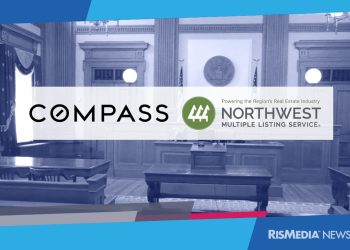RISMEDIA, December 31, 2009—(MCT)—Standing on the front stoop of neighborhood homes, Betty Gutierrez sees her community from a different vantage point than she has in the 25 years she has lived in West Lawn, Ill.
She doesn’t know the homeowners on the other side of the door. What she does know is they are behind on their mortgage payments and in danger of losing their homes to foreclosure. That affects them but also Gutierrez, so she’s volunteered to help stabilize the neighborhood.
Armed with the names of delinquent borrowers from Bank of America, Gutierrez and 48 other volunteers are doing the work that banks and housing counselors can’t: personally calling on troubled homeowners and encouraging them to seek trial loan modifications and fill out the paperwork and seek trial loan modifications.
“You walk up those stairs, you don’t know what’s going to happen,” Gutierrez said. “It has taken us totally out of our comfort zone. You see your neighborhood through a whole different prism. You see a neighborhood in deterioration.”
Throughout the country, community groups, governmental agencies and lenders have sent out mass mailings and conducted “fix your mortgage” events in school gyms, specially outfitted buses and exhibition halls.
However, it’s been hard for some communities to get out from under the crushing weight of foreclosures. Lenders, loan servicers and housing counselors don’t have the resources to adequately counsel the estimated 3.2 million delinquent borrowers nationally that may be eligible for a mortgage modification under the federal government’s Home Affordable Modification Program.
In an experiment under way on Chicago’s Southwest Side, Bank of America is using local homeowners, who have their own property home values at stake, to encourage delinquent borrowers to pursue loan modifications. If successful, the effort that began earlier this month in four select zip codes could be expanded to other communities by the bank, which nationally has more than 990,000 delinquent mortgages that could be eligible for modification. It also could serve as a blueprint for other lenders that want to try a grass-roots approach.
The pilot project is an outgrowth of an emotionally charged meeting in July 2009 between more than 200 Southwest Side community residents and Bank of America, one of the larger lenders in a neighborhood racked by foreclosures. For the first nine months of the year, lenders initiated foreclosure on 1,852 homes in four zip codes—Bank of America was behind 191 of those filings, the second most in the neighborhood, according to public records compiled by the Southwest Organizing Project.
A promise from the bank to fast-track trial mortgage-loan-modification applications was one outgrowth of that meeting.
School principals, ministers, priests and rabbis started talking up the community/bank partnership a few weeks ago. At the same time, Bank of America began sending letters to borrowers that were 60 days or more delinquent, detailing the local effort and the pared-down documentation needed to apply for a trial modification under the Home Affordable Modification Program.
After signing a nondisclosure agreement with community groups, the bank passed along the names of delinquent borrowers, names that wouldn’t be publicly known unless a foreclosure had been filed, so volunteers could begin outreach efforts.
Neighborhood volunteers who passed criminal background checks are now working through the list, making phone calls and knocking on doors to see if homeowners received the letter and encouraging them to apply for a modification. They introduce themselves as neighborhood residents, church members or school parent volunteers, making it clear they don’t work for the bank.
“In the beginning, they look at you like, ‘Who are you?'” said Adriana Mejia, a program volunteer. “Then they open the doors. They’ve even offered me coffee.”
The grass-roots effort is “doing work that we as a bank can’t do,” said Robert Grossinger, a Bank of America senior vice president. “The people who are most likely to be able to make contact with a homeowner who is embarrassed or shy about their situation is someone who lives in the community.”
Robert Navarro is visiting 18 homeowners on his list; at some homes he’s helping people unearth the letter from a pile of junk mail. “We’re not going up to them in suits and ties,” Navarro said. “I emphasize I don’t work for the bank. I’m a volunteer, and then they put their guards down and start talking. A lot are saying they haven’t even opened the letter.”
That’s not the only challenge the initiative faces. Felicidad Masibay has reached only about half the homeowners on her list: Disconnected phone numbers, empty houses and locked iron security gates have prevented her from reaching others.
Of the people she’s talked to, only one has asked how she got their name. “I don’t let on that I know anything about them,” Masibay said. “We just have to make sure they understand the importance of this. It’s our community.”
(c) 2009, Chicago Tribune.
Distributed by McClatchy-Tribune Information Services.
Don’t miss these real estate related headlines on RISMedia.com:
A Look into the Future – Introducing Vicki Cox Golder: NAR President 2010
Podcast Your Way to Today’s Tech-Savvy Buyer










